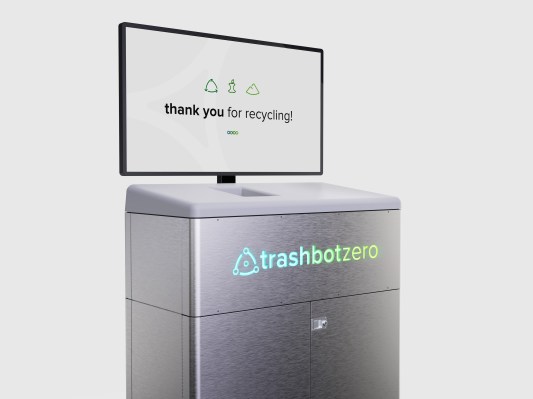There are a number of startups working to improve trash sorting with robots. AMP Robotics is near the top of the list, coupling a picker and a conveyor belt to sort materials in large, automated facilities. The technology aims to correct human shortcomings when it comes to recycling. Too often people either don’t bother to separate trash, or simply don’t understand where things go.
Founded in 2015, CleanRobotics hopes to correct the issue at the point of disposal. The Colorado firm’s flagship trashbot system uses on-board machine learning and robotic systems to sort materials from a single disposal point. It claims the machines are able to do so with roughly 90% accuracy — not perfect, but certainly better that what humans generally do.
“Recycling rules are confusing and consumers are often so confused that their recycling accuracy is less than chance, leading to highly contaminated recyclables, which no one is buying,” CEO Charles Yhap said in a release. “Our system improves material diversion from landfills, resulting in more recyclables and less waste.”
Given the on-board AI/ML, the trash sorting robot is, naturally, gathering data to help improve the sorting process. CleanRobotics notes, “The recycling bin of the future doesn’t stop there, it also generates high-quality data for waste audits, triggers fullness alerts, and features a large display for video content. And thanks to cloud connectivity, your TrashBot fleet only gets smarter over time.”
It’s easy to imagine other commerce-related data being utilized, based on the specific trash the system collects.
This week, the company announced a $4.5 million Series A led by Melco International Development Limited and featuring SOSV/HAX, Undivided VC and Longmont Evergreen Opportunity Fund. The funding will go toward CleanRobotics’ plans to produce “hundreds” of systems, in addition to those already installed in high-traffic areas like shopping malls and airports.
In particular, the company says it’s eyeing partnerships in China, Australia and Singapore. Funding will also go toward making additional hires, improving manufacturing and ramping up research and development.
